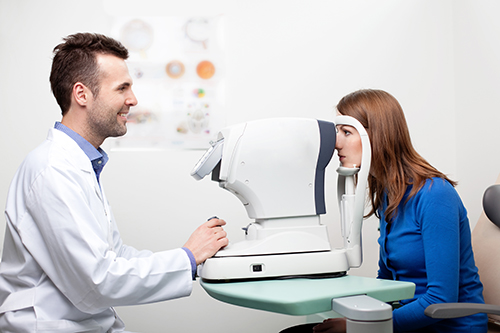LASIK
Dr. Lee is a fellowship-trained, experienced refractive surgeon as well as a happy LASIK patient himself. He performs both bladeless, all-laser LASIK and Advanced Surface Ablation, also known as PRK. His philosophy is to screen patients very carefully, understand their goals, and have a thorough discussion of the risks and benefits of laser vision correction.

Refractive error is the general term for problems in focusing:
- Myopia, or nearsightedness: you can see things close up but need help (glasses or contacts) to see distance.
- Hyperopia, or farsightedness: you need help seeing things up close and sometimes even at distance. At first, the eye can do extra “work” called accommodation to help compensate for farsightedness, but this ability decreases with time.
- Astigmatism: instead of being perfectly round like a baseball, the eye has a difference in curvature where one part is more curved than the other like a football, leading to distortion of vision at all distances.
- Presbyopia: as the eye ages, it loses the ability to focus up close, or accommodate. This is why most people need to wear reading glasses or bifocals in their 40s.
In LASIK and PRK, Dr. Lee uses a laser to reshape the cornea, the clear window in the front of the eye, to compensate for your nearsightedness, farsightedness, and/or astigmatism. Either surgery usually takes about 30 minutes to perform in both eyes. Both procedures have high success rates, but they are surgeries, so it is important to find a surgeon whom you know and trust. You will have ample time to meet Dr. Lee before your surgery, ask him questions, and see him for the critical postoperative visits.
Things to know:
- You should not wear soft contact lenses for at least two weeks before your pre-operative measurement visit and the two weeks before your surgery. For gas permeable contacts, it is three weeks before each.
- You will take eye drops for several weeks after your surgery.

